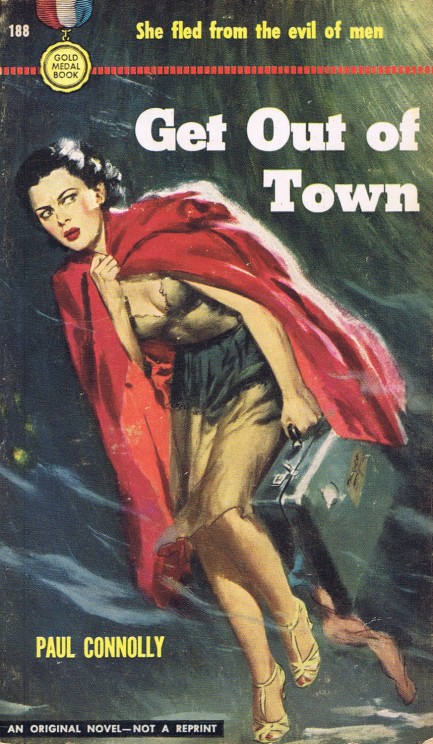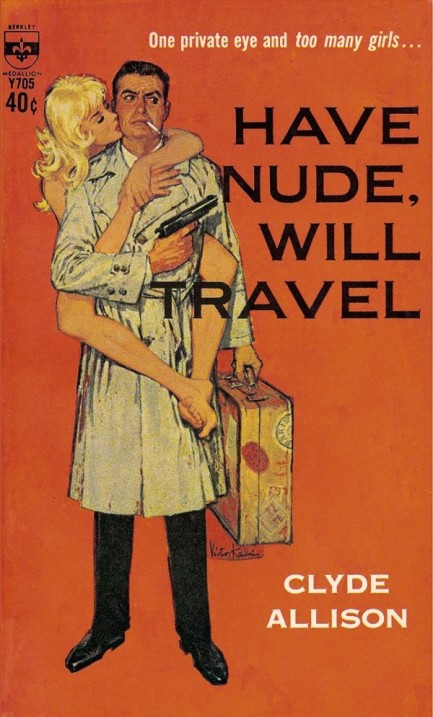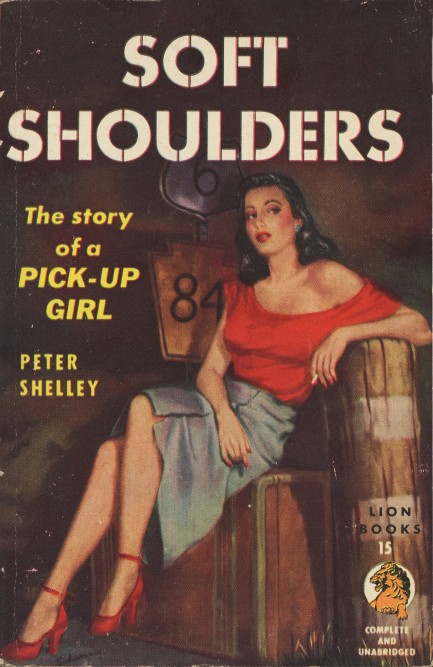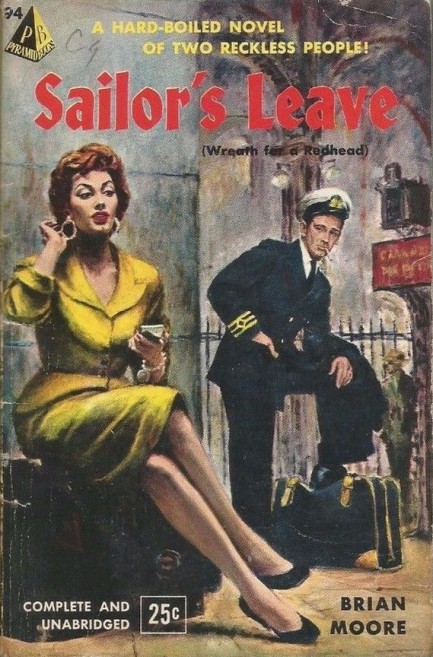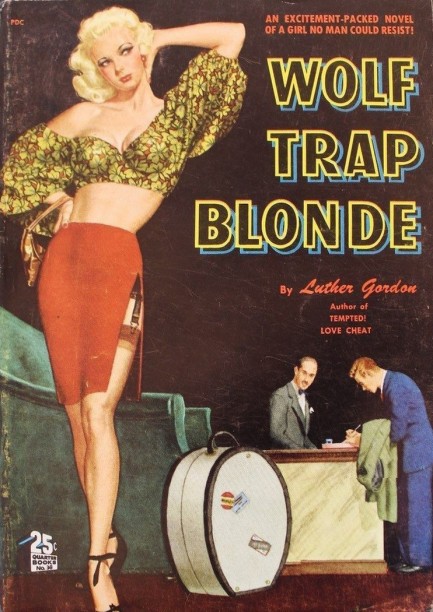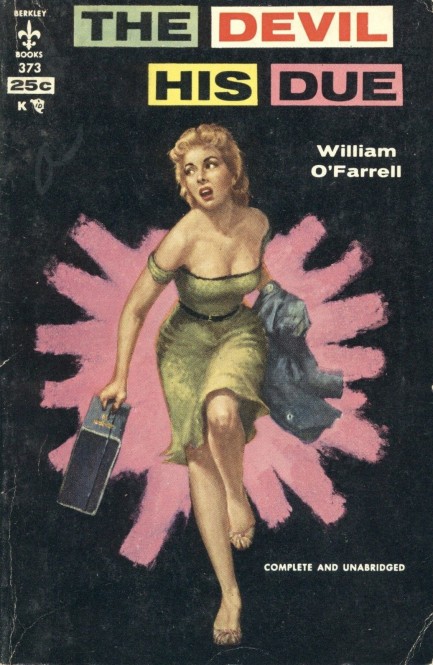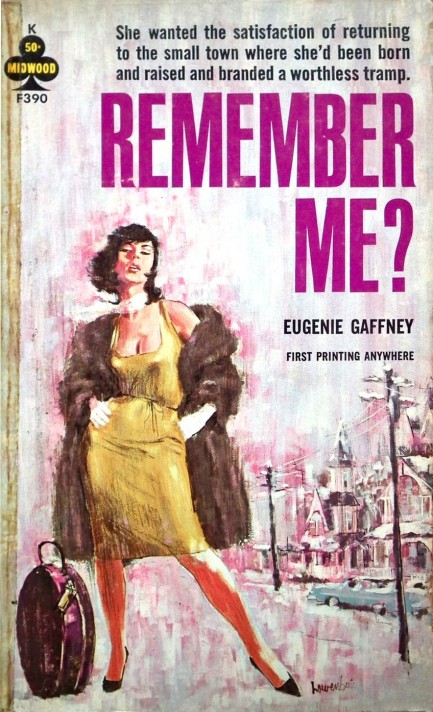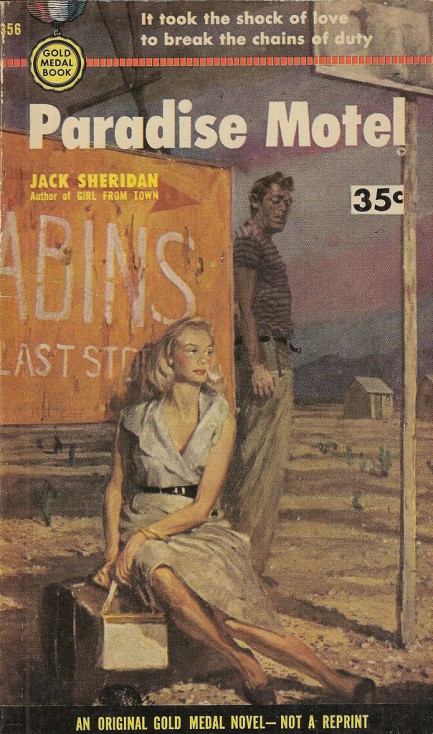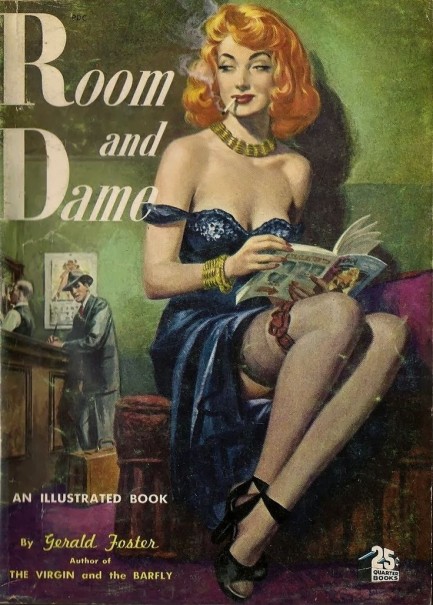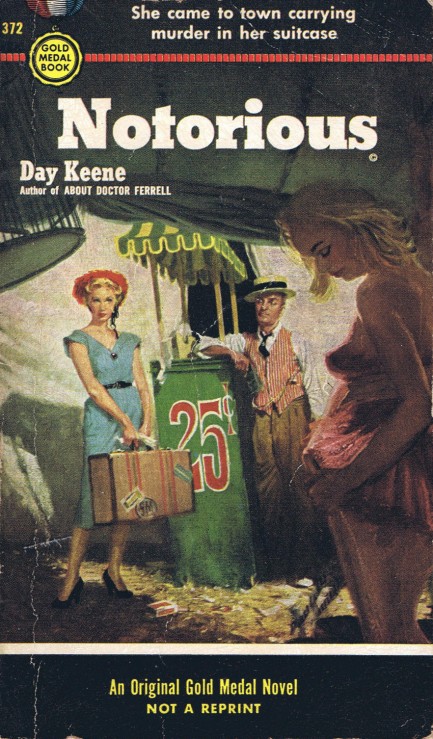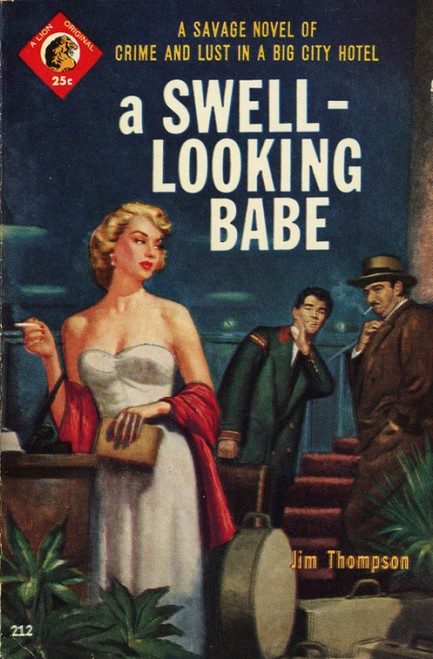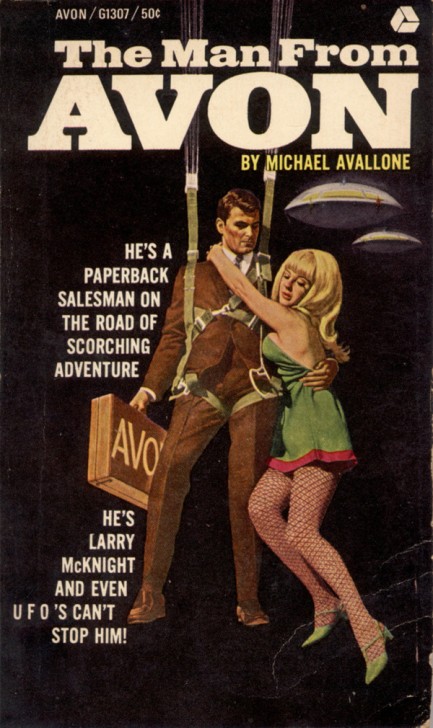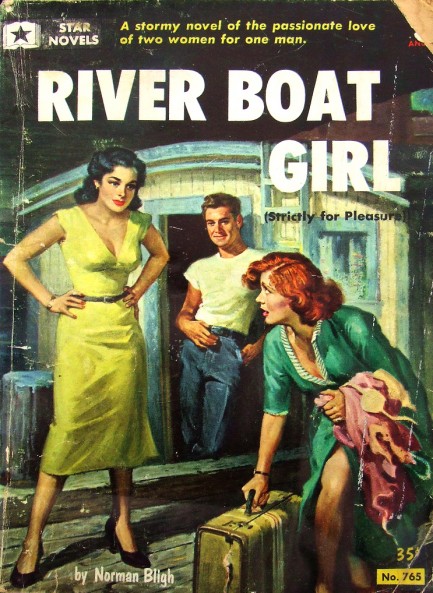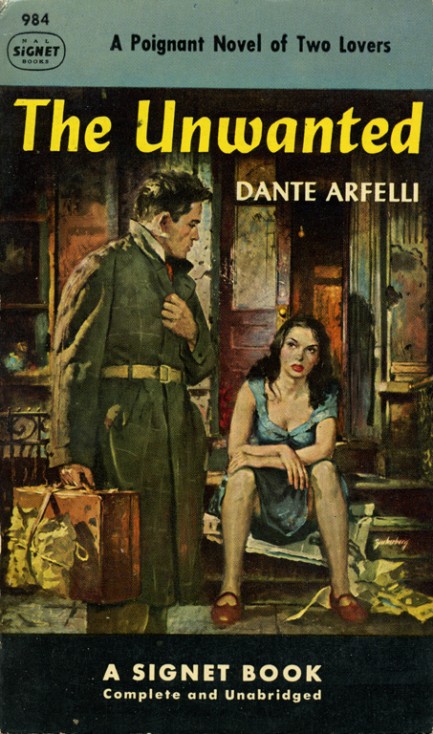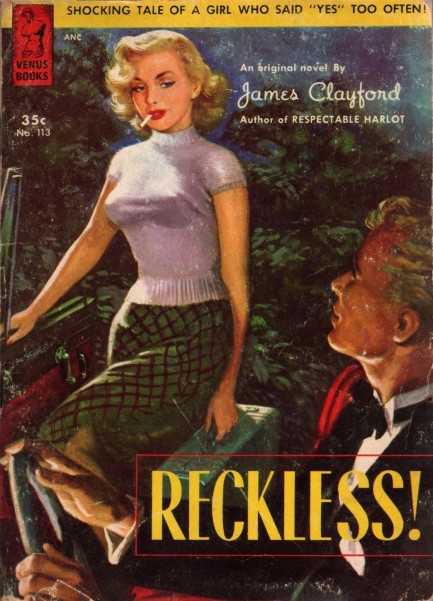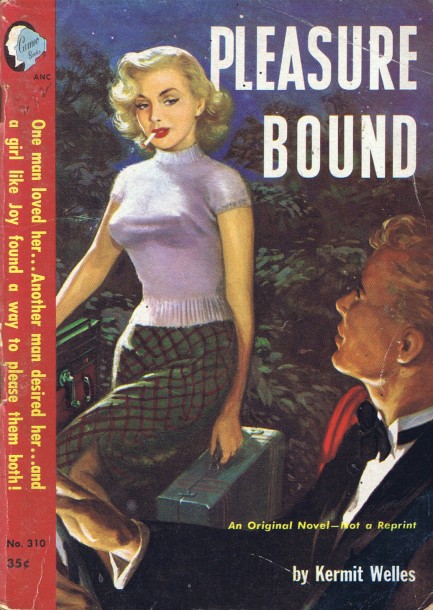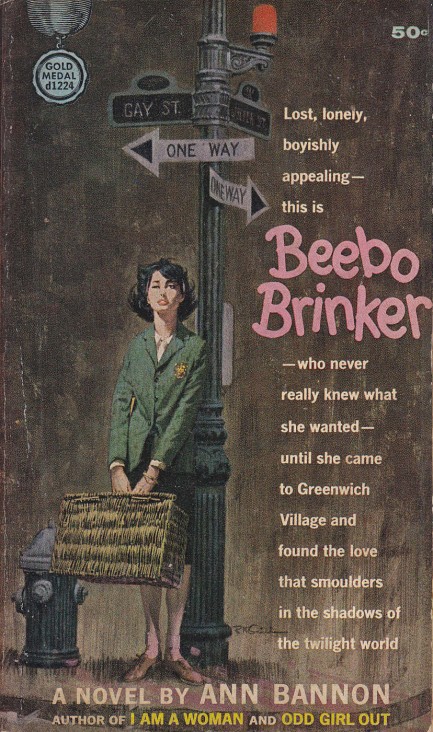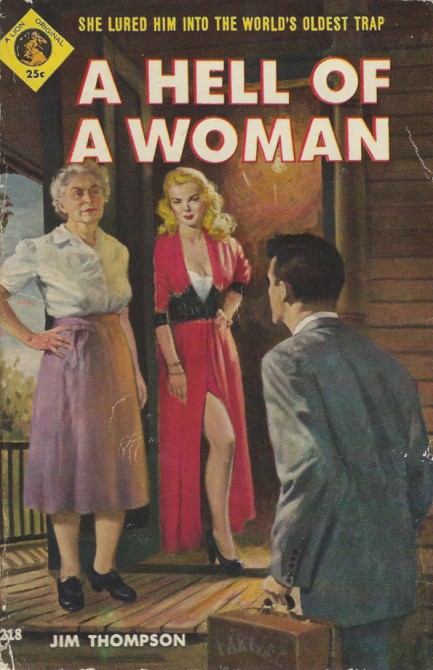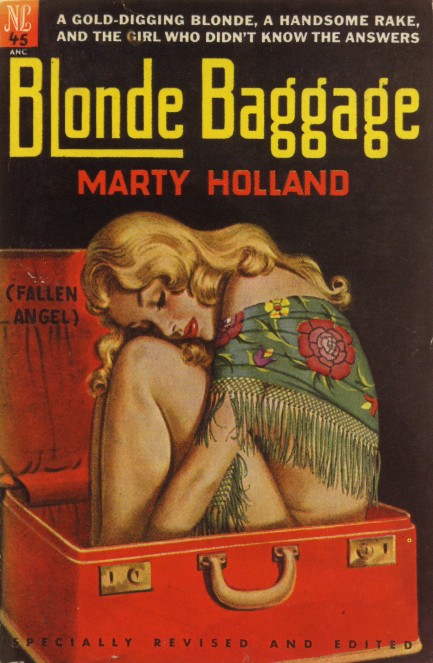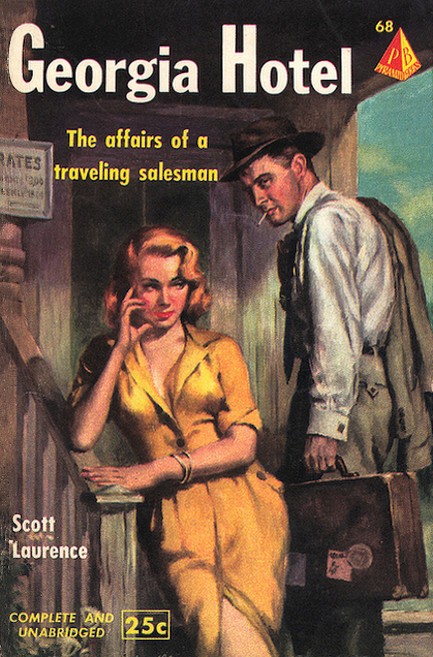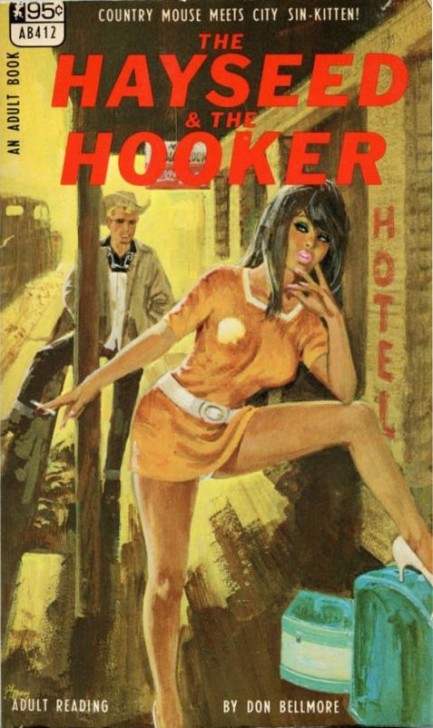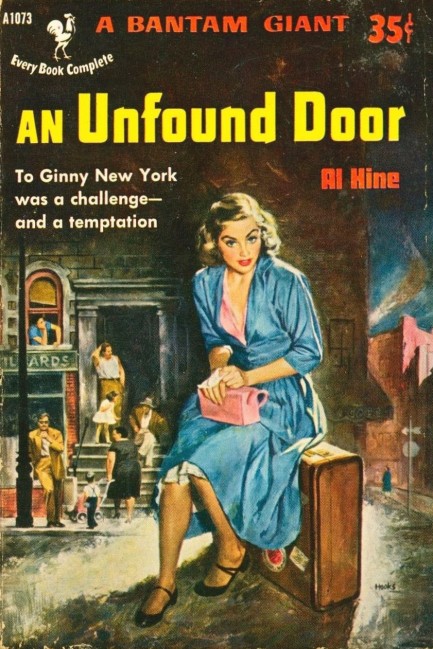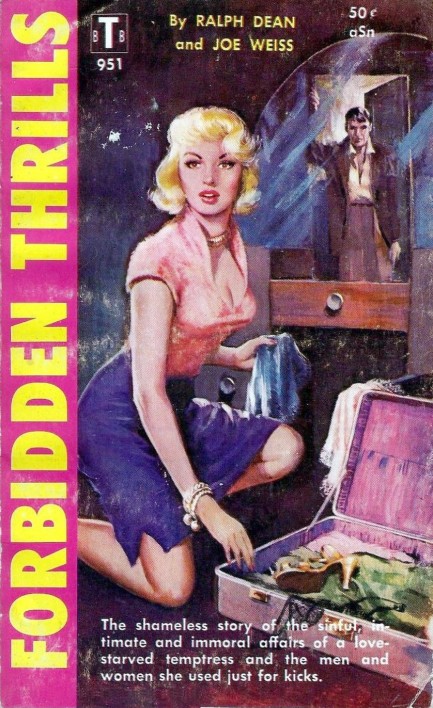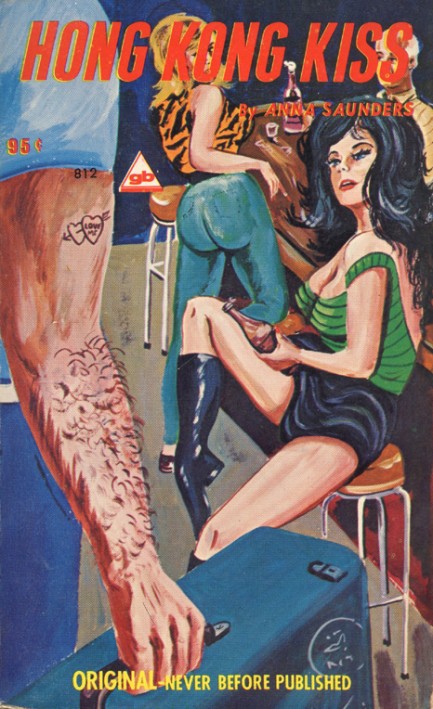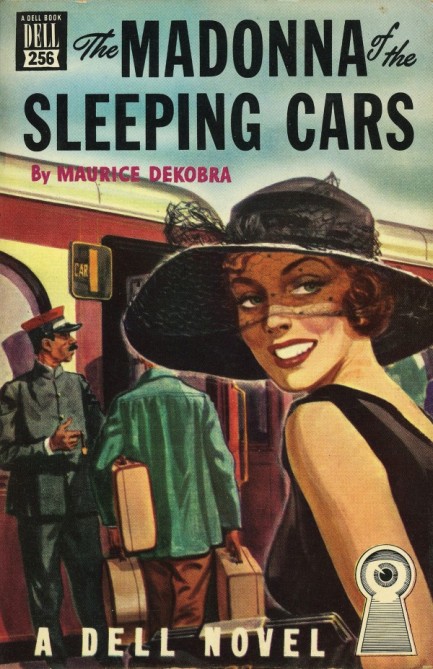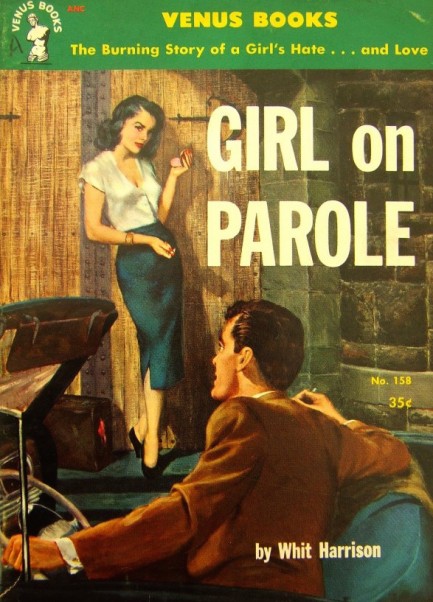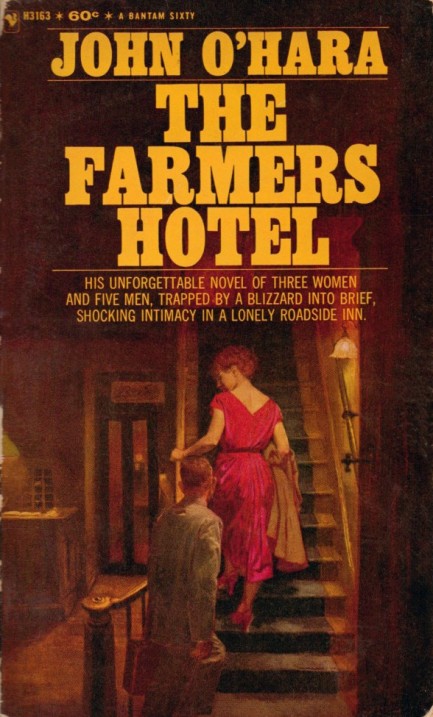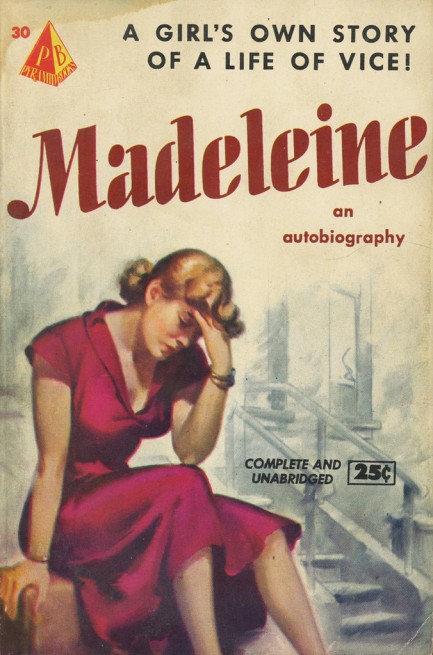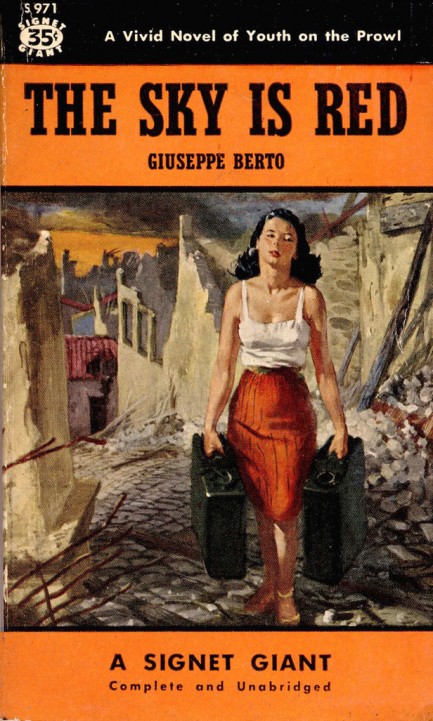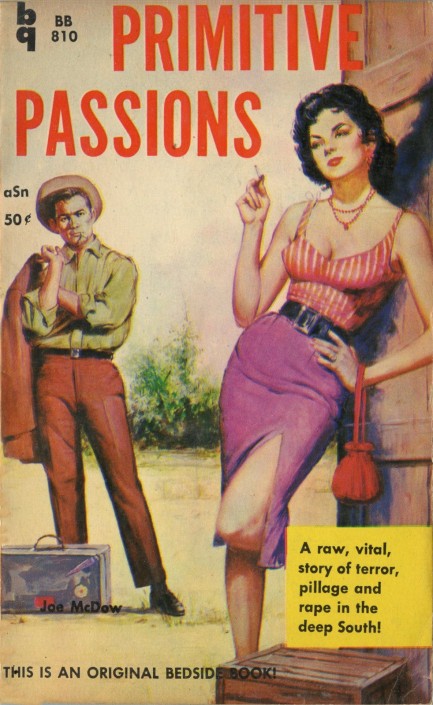 1960 jazz novel soars to great heights. 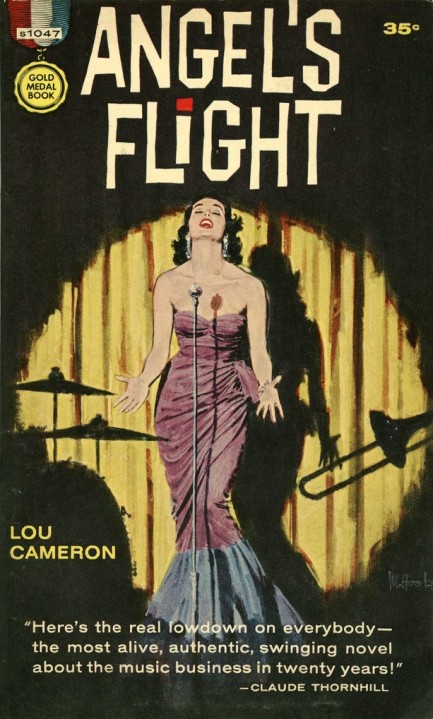
Told over a span of years wrapped around World War II, Lou Cameron's novel Angel's Flight appeared in 1960 and was set in the mid-century jazz scene. Cameron writes in a beat style, imbues his prose with a powerful sense of place, fills it with factual anecdotes, colorful characters, and wild slang, ultimately weaving a sprawling tale of rags to riches, hope and struggle, and one man's determination to maintain his integrity in a cutthroat world.
We realized we were reading something really good during a scene a quarter of the way through in which the main character, Ben, is chatting with his nemesis Johnny in the parking lot of a movie studio. Johnny is trying to get Ben to understand something elemental about how to achieve success. Ben isn't getting it. Johnny says, “Watch this. You'll learn something.” He grabs Ben's panama hat from his head and sails it away.
Ben: “Hey, that cost me eight bucks!”
The wind takes the hat, and it skips and rolls away. But a nearby man chases it down, and, huffing and puffing, eagerly returns it to Ben. After the man leaves, Johnny explains that the good samaritan was no random guy, but was the production chief, one of the top guys at the studio. Yet despite his position, he chased the hat. “He'd have done that for any grip on the goddamn lot,” Johnny says.
Ben: “So he's democratic.”
“You still don't dig me? Christ, you're thick!”
Johnny goes on to explain that the studio exec chased the hat because it was a reflex, just like Pavlov's dog. And if you understand people's reflexes you can control them. “They don't think," he says. "They react. Show them a picture of a blind girl with a puppy and they get lumps in their throats. Wave a flag and they stand. Show them a picture of Hitler and they hiss. Are you getting the picture? Do you dig what I'm saying?”
But no, Ben doesn't get it. He is thick. And his reply almost put us on the floor laughing:
“All I dig, you bastard, is that you used my hat! Next time gives a fat lip!”
It's a funny, insightful, cleverly conceived scene, and from that point forward we settled in for what we knew would be an amazing ride. Another funny exchange involves Ben's roommate and occasional sex partner Dorothy, who works as a nude art model and often can't be bothered to wear clothes around the apartment. Note: in the dialogue below, “Read from a map,” is slang for reading sheet music.
I asked Dorothy if she knew a cat who could read from a map. She thought prettily for a moment and said, “There's my husband, Tom. He used to play cello.”
"Don't you know anybody but your husband? He's liable to take a dim view of life as he finds it on the Sunset Strip.”
“Oh, Tom won't mind. He's very progressive.”
“He'd have to be. Is there anybody you haven't slept with who reads music? For that matter, is there anybody you haven't slept with?”
That's funny stuff. Ben had no idea until that moment Dorothy was even married. But he really needs someone who can read music, so his desperation causes him—save for a touch of exasperation—to ignore Dorothy's surprising revelation and all its strange implications, which makes the scene all the funnier.
But Angel's Flight isn't a comedy. It's a gritty tale about a jazz musician trying to make it in L.A., and mixed into the narrative is crime, betrayal, and drugs, along with harsh racial and homophobic language. But it also features many ethnic and gay characters in actual three-dimensional speaking roles, rather than as exotic ornaments. The white characters aren't spared racial insults either. In the end, each reader needs to decide whether to endure rough content, or say no to a significant piece of vintage literature.
Those who forge ahead will read a memorable story. They'll learn about the origins of jazz and the mechanisms of the music industry, from forming bands, to gigging, to pressing records, to earning radio play. They'll also discover that the title Angel's Flight is metaphorical on multiple levels. The villain is Johnny Angel, bi-sexual hustler extraordinaire. The song that secures his fame is called “Angel's Flight.” And of course the title predicts his meteoric rise in the music industry.
But most importantly, the book's title also references the vintage Angels Flight funicular in downtown Los Angeles. Ben has never been on it. He wonders what's at the top. He rides it one night and finds that at the end of the line there's nothing. Just a dark street. And lonely ambition. This is a highly recommended book. The Gold Medal edition, which you see above, has Mitchell Hooks cover art.
 Taxes are still unavoidable. But depending on weather and traffic, death sometimes doesn't show up at all. 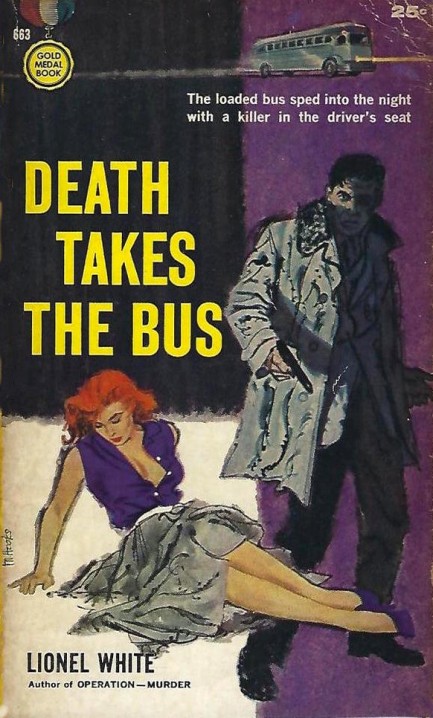 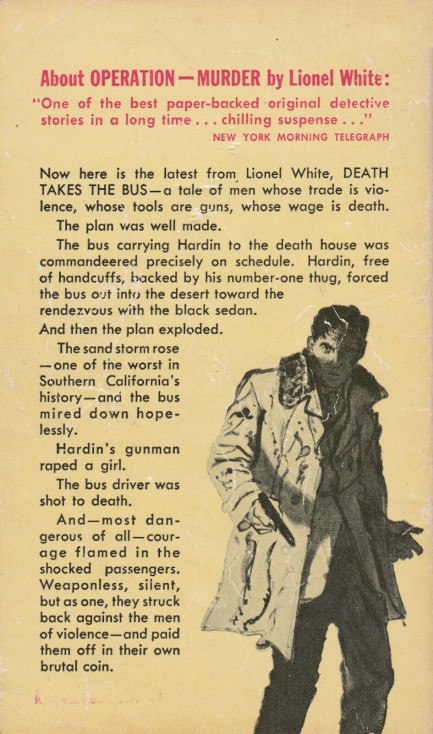
Above, front and rear covers painted by Mitchell Hooks for Lionel White's 1957 novel Death and Taxes. We considered buying this, but we have so many books and magazines piled up now it's just stupid. Also we already have a couple of other White novels, so we'll get back to him later. Check out our write-up on his novel The Big Caper.
 They said she needed a hobby and look what happened. 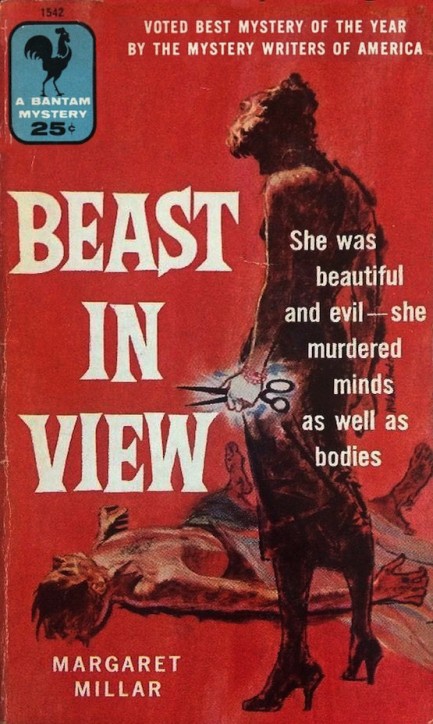
Each vintage book brings interesting discoveries. For instance, we recently learned that there was once a drink made with sherry and an egg yolk. Seriously. Reading Beast in View we learned that another name once used for scissors—at least by author Margaret Milar—was “paper knife.” Always have a really big paper knife around the house. Small ones are fine for cutting paper, but the huge ones are better for going through arteries. A terrible fate, surely, though no worse than drinking sherry with an egg yolk in it. But we're getting ahead of ourselves.
The villain in Beast in View begins as nothing more than a serial phone harasser who seems to know just enough about her victims to prey on their insecurities. The lies she tells her victims are terrible, and the language is ugly too. More direct forms of harassment soon commence, just about the time amateur sleuth Paul Blackshear steps in and is asked to find the caller. That seems easy enough at first, but he soon finds that identity is a more nebulous concept than he imagined.
Beast in View won the 1955 Edgar Award for best mystery of the year. Hmm... well we liked it. But is it really better than Patricia Highsmith's The Talented Mr. Ripley, which it beat? We don't know about that. Later Beast in View was voted one of the best mysteries of all time by the Mystery Writers of America. That's a broader accolade, in a way, and we can't find any fault there. It's a good book, written in classical mystery style, with a great ending, and this line:
[no spoiler] felt no pain, only a little surprise at how pretty the blood looked, like bright and endless ribbons that would never again be tied.
Well, that's certainly a nice piece of writing. This was our second Millar, and we have another lined up for a bit later. But first we may re-read The Talented Mr. Ripley, just to see if our memories are betraying us and Highsmith really isn't the better writer. But it isn't a competition anyway, is it? That defeats the entire point of reading for pleasure. Copyright on Beast in View is originally 1955, and this Bantam paperback edition came in '56 with Mitchell Hooks cover art of a woman holding Millar's paper knife.
 Any of you hardened felons seen my beautiful virginal daughter lately? 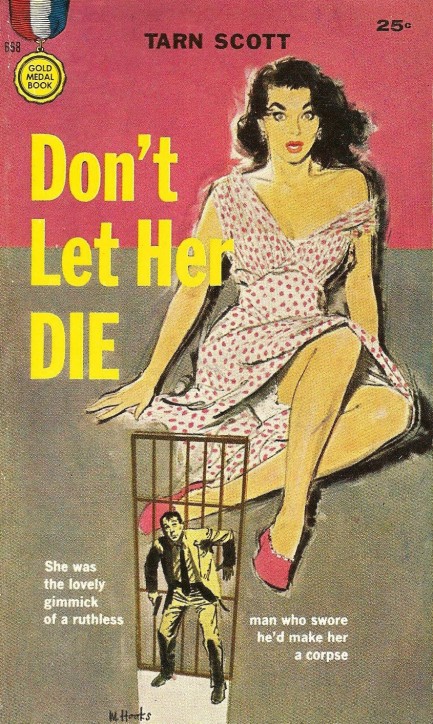
Mitchell Hooks handles the cover work on this Gold Medal edition of the 1957 Tarn Scott thriller Don't Let Her Die. The book concerns a well connected prison inmate who uses his outside-the-walls contacts to kidnap the warden's daughter and maneuver for a pardon in exchange for her life. We say maneuver rather than demand because the convict keeps deniability throughout, claiming to know nothing even as the warden daily receives anonymous ultimatums, with a little extra motivation provided by photos of his terrified daughter nude. The warden caves pretty quickly, appeals to the governor for the pardon, is refused, and that's where things get interesting. There's more grit than usual here, but certain lines will not be crossed, and the reader is well aware of that, despite all the menace injected into the prose. Even so, Scott—a pseudonym used by Walter Szot and Peter G. Tarnor—certainly showed promise. Sadly, the pairing only produced a few books.
 There's a sucker born every minute. And they die just as fast. 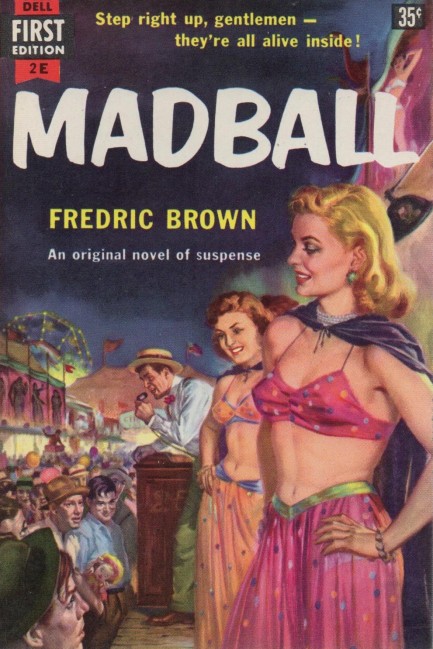 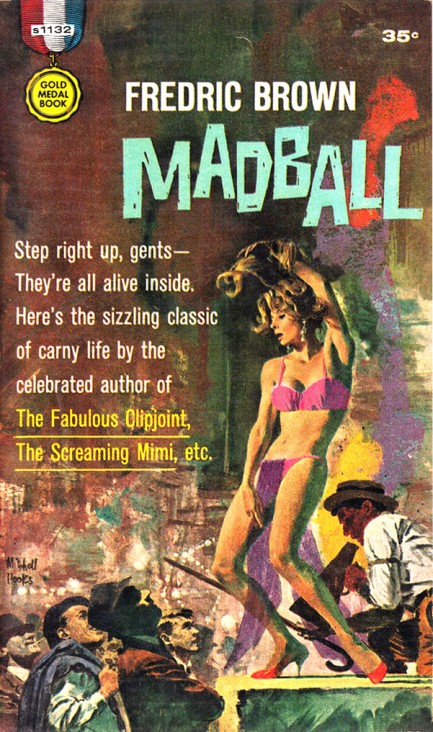
Fredric Brown's Madball was hard as hell to get at anything approaching a reasonable cost but we finally scored a copy. It's one of the more famous novels in the fertile carny niche, and had two amazing covers which you see above, the first by Griffith Foxley for the 1953 Dell edition, and the second by Mitchell Hooks for the 1962 Gold Medal edition. What's a madball? It's a gazing crystal. What's Madball about? After an insurance settlement a carnival worker comes into a couple of thousand bucks. When he's murdered his nest egg seems like the motive. But what nobody knows—or what nobody is supposed to know—is that he'd also been an accomplice in a bank robbery and possessed not just a couple of thousand dollars, but more than $40,000. That's about $380,000 in today's money—sufficient to inspire desperation and bloodthirsty viciousness. Madball is set apart by its weird backdrop, its odd carny denizens, its multi-pov narrative, and its sexual frankness. It's a mad tale, improbably plotted, testing the limits of believability, but recommended. See more carny fiction here, here, and here.
 A man in love can talk himself into anything. 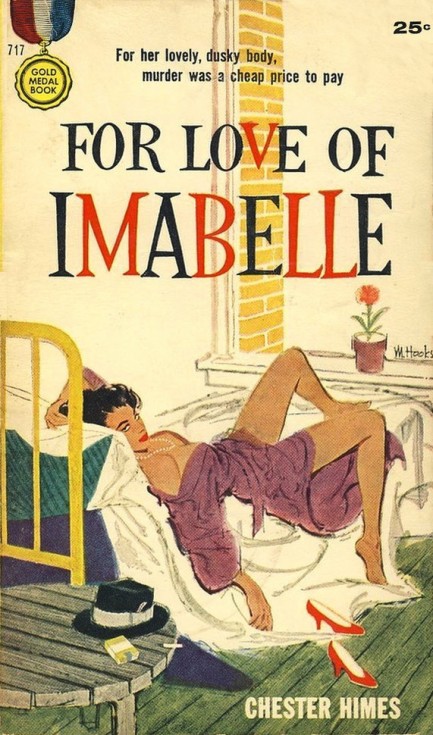
Above is a top notch Mitchell Hooks cover for the classic Chester Himes thriller For Love of Imabelle, which is about a good-hearted but simple man named Jackson who's conned out of his life savings. Get this: he actually believes a man can change the denomination of paper money by cooking it in an oven. In go ten-dollar bills, turn up the heat, and—presto—out come one-hundred dollar bills. The scam, of course, is that the tens are pocketed before cooking and switched for counterfeit hundreds. Silly perhaps, but Himes wrote things he knew, so this con doubtless existed. The basic thrust of the plot is twofold: how to 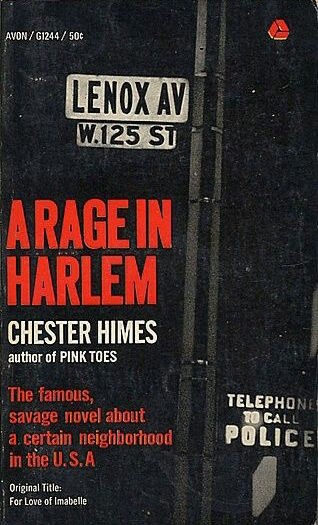 get the money back before Jackson's life is ruined, and whether our hapless hero's now missing girlfriend Imabelle is a fellow victim or a heartless participant in the scam. In Himes' hands everything unfolds with great style. Check this sentence: get the money back before Jackson's life is ruined, and whether our hapless hero's now missing girlfriend Imabelle is a fellow victim or a heartless participant in the scam. In Himes' hands everything unfolds with great style. Check this sentence:
Jackson looked up at the clock on the wall and the clock said hurry-hurry.
Only a unique talent could pull off something so jazzy. We were less impressed with his third novel The Crazy Kill—which was the first of his books we read—but with his award winning Imabelle we've gone back to the beginning of his Harlem cycle and he's got us hooked now, especially since he's actually written a conventional good guy. In The Crazy Kill there are few legitimately sympathetic characters, but in this one you can really root for poor overmatched Jackson. Himes' franchise detectives Coffin Ed and Gravedigger Jones also play significant roles, and in fact Imabelle contains the defining moment of Coffin Ed's career. The story is topped off by a chaotic action movie style climax that's both thrilling and appalling. The Fawcett Gold Medal paperback at top appeared in 1957, and a later reissue as A Rage in Harlem came in 1965. And then there's the movie. Maybe we'll talk about that later.
 Eww! No way! If you want them shaved do it yourself! 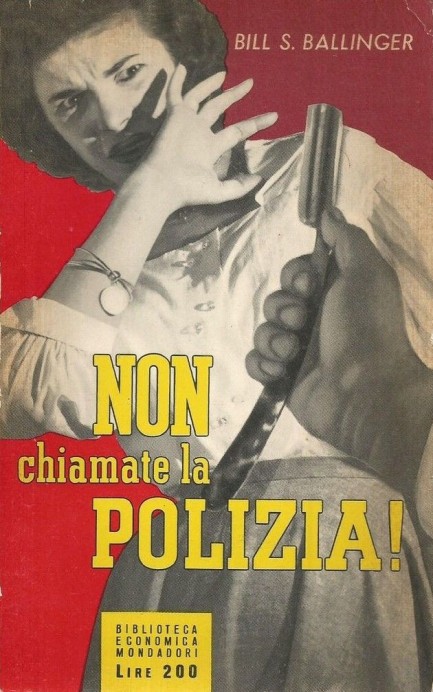
Non chiamate la polizia would translate as Don't Call the Police, a title chosen because that's exactly what doesn't happen. A Chicago businessman gets out of the shower to find his mistress dead, and he doesn't call the cops, instead relying on a private investigator named—wait for it—Barr Breed. That's one of the better names. This was published by Arnoldo Mondadori Editore for its Biblioteca Economica collection, and it's from 1955 and was written by Bill S. Ballinger, aka Frederic Freyer, aka B.X. Sanborn, aka Barr Breed. Actually, strike that last one. We just wanted to say it again. The book originally appeared in 1948 in the U.S., where it had another precisely descriptive title—The Corpse in the Bed. The art for Signet by Mitchell Hooks was excellent, and you see that below. We'll have more from Hooks later.
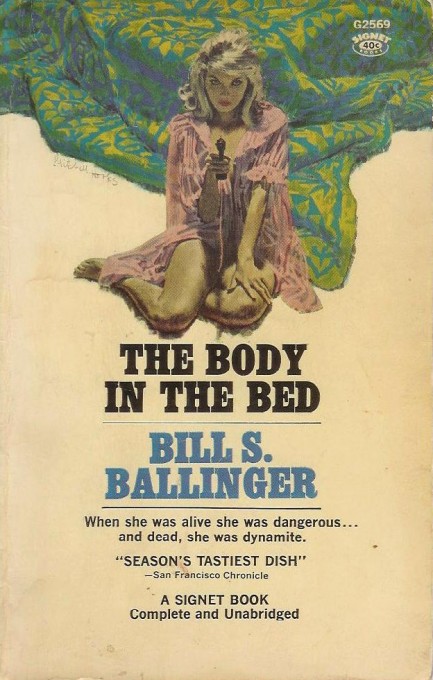
 An American crime story. 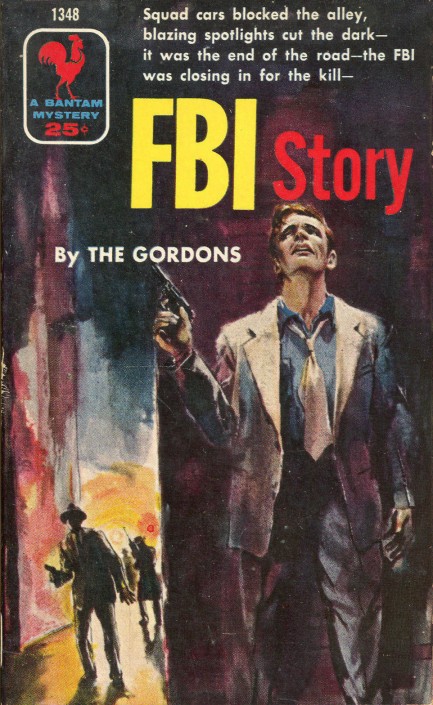 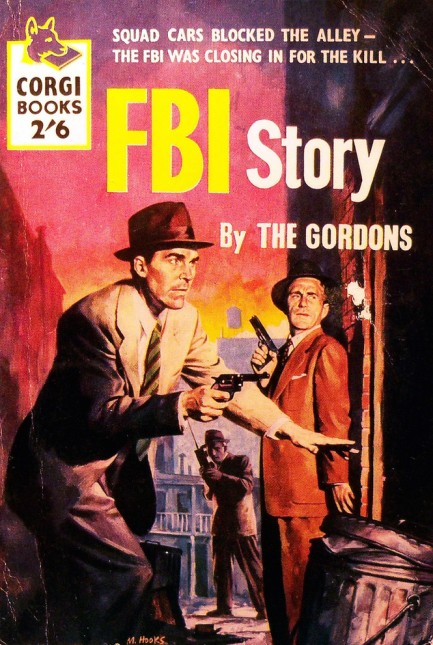
Written by The Gordons, who were the tandem of spouses Gordon Gordon and Mildred Gordon, FBI Story follows Agent John Ripley as he investigates the disappearance of a woman named Genie. She's wanted for theft by the FBI, and by the Los Angeles police as a person of interest in a murder case. Ripley finds that he and the missing woman have a lot in common, a fact revealed by his perusal of her bookshelf and diary. Is she really a criminal or just a desperate woman in deep trouble? As the investigation unfolds and the search spans the entire United States, we learn that other people are after her, including a millionaire American fascist who looks like Hitler and rants about the master race. Eventually Ripley uncovers jewel thievery, treason, and the mysterious Genie herself. Originally published in hardback on the heels of World War II in 1950, FBI Story delves deeply into the weariness and cynicism of combat vets, of which Ripley is one, yet all the agents are unswervingly dutiful and honest. Considering the fact that the novel is dedicated to J. Edgar Hoover, one could be excused for branding it propaganda. In fact, Gordon Gordon was an ex-FBI agent and had J. Edgar Hoover approve his work. Even so, FBI Story is generally considered a good read. It was later turned into a movie starring James Stewart and Vera Miles. The Bantam edition of the book is from 1955 with uncredited art, and the Corgi one appeared in 1957 with Mitchell Hooks on the cover chores.
 Only good hot sax could make a girl move her body that way. 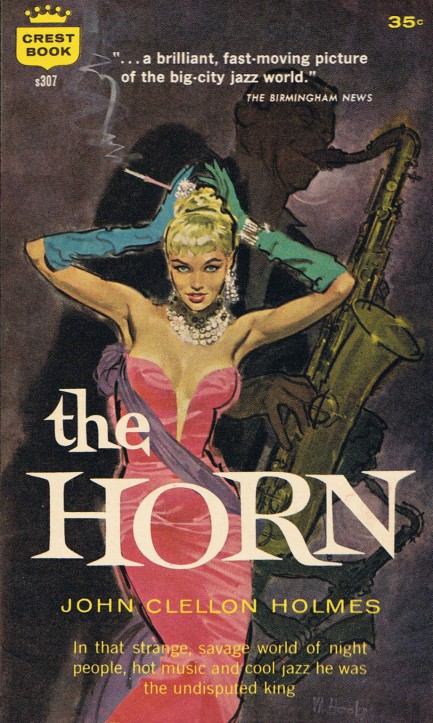
In 1958's hit novel The Horn beat author John Clellon Holmes tells the story of Edgar Pool, a talented tenor saxophonist who makes his mark on the NYC jazz scene and grows into a global legend. The last twenty-four hours of his life are related via the recollections of friends and lovers, so what you get is a rise-and-fall biography centered around a booze-drugs-women nexus, which Holmes based on the lives of jazz masters Lester Young and Charlie Parker and set in 1954 to give it a tinge of documentary nostalgia. It's a really nice piece of literature. Holmes had already written Go, which is considered the first beat novel; The Horn is the definitive jazz novel from that genre. This 1959 Fawcett Crest paperback comes with worthy cover art from Mitchell Hooks. 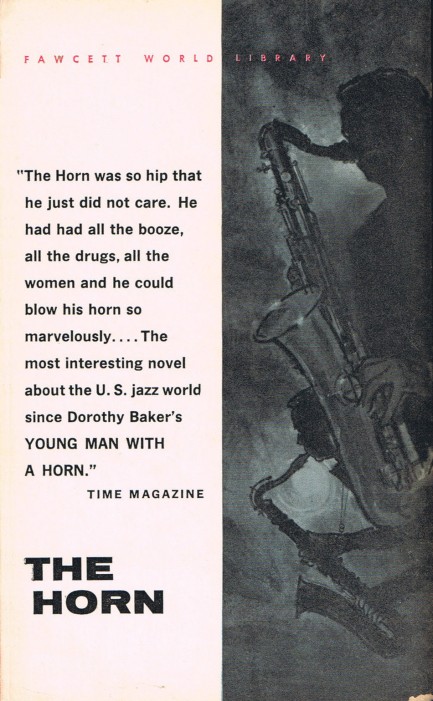
|
 |

The headlines that mattered yesteryear.
1927—Mae West Sentenced to Jail
American actress and playwright Mae West is sentenced to ten days in jail for obscenity for the content of her play Sex. The trial occurred even though the play had run for a year and had been seen by 325,000 people. However West's considerable popularity, already based on her risque image, only increased due to the controversy. 1971—Manson Sentenced to Death
In the U.S, cult leader Charles Manson is sentenced to death for inciting the murders of Sharon Tate and several other people. Three accomplices, who had actually done the killing, were also sentenced to death, but the state of California abolished capital punishment in 1972 and neither they nor Manson were ever actually executed. 1923—Yankee Stadium Opens
In New York City, Yankee Stadium, home of Major League Baseball's New York Yankees, opens with the Yankees beating their eternal rivals the Boston Red Sox 4 to 1. The stadium, which is nicknamed The House that Ruth Built, sees the Yankees become the most successful franchise in baseball history. It is eventually replaced by a new Yankee Stadium and closes in September 2008. 1961—Bay of Pigs Invasion Is Launched
A group of CIA financed and trained Cuban refugees lands at the Bay of Pigs in southern Cuba with the aim of ousting Fidel Castro. However, the invasion fails badly and the result is embarrassment for U.S. president John F. Kennedy and a major boost in popularity for Fidel Castro, and also has the effect of pushing him toward the Soviet Union for protection.
|

|
|

It's easy. We have an uploader that makes it a snap. Use it to submit your art, text, header, and subhead. Your post can be funny, serious, or anything in between, as long as it's vintage pulp. You'll get a byline and experience the fleeting pride of free authorship. We'll edit your post for typos, but the rest is up to you. Click here to give us your best shot.

|
|














 get the money back before Jackson's life is ruined, and whether our hapless hero's now missing girlfriend Imabelle is a fellow victim or a heartless participant in the scam. In Himes' hands everything unfolds with great style. Check this sentence:
get the money back before Jackson's life is ruined, and whether our hapless hero's now missing girlfriend Imabelle is a fellow victim or a heartless participant in the scam. In Himes' hands everything unfolds with great style. Check this sentence: 






